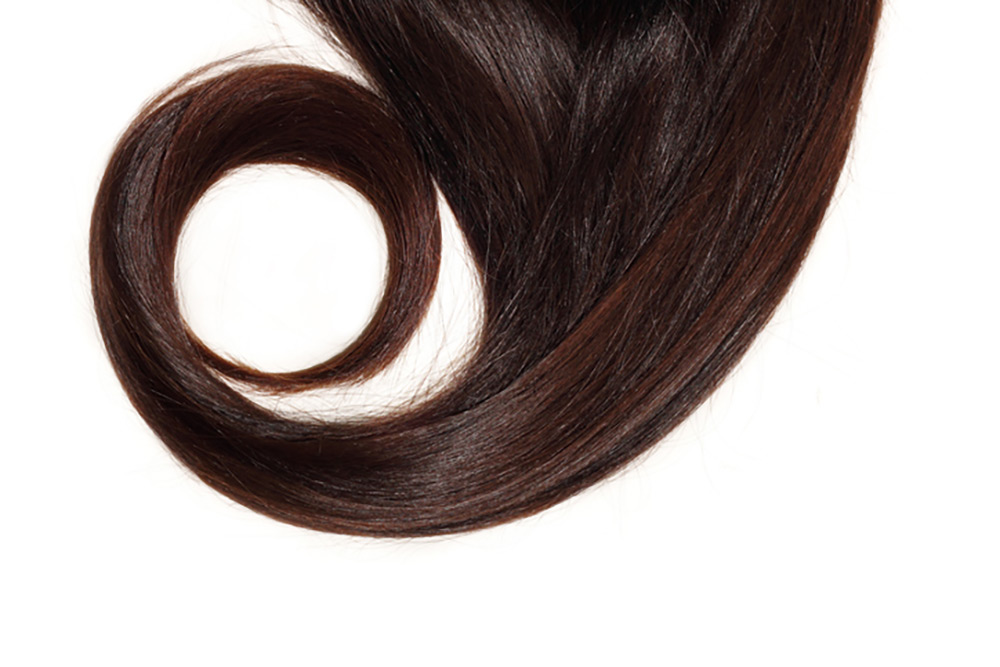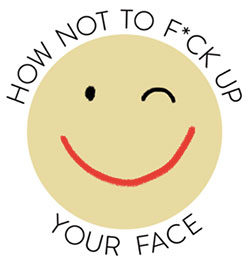By Valerie Monroe
If you’re interested in feeling happier about your appearance—especially as you age—you might like reading what she has to say about it. For more of her philosophical and practical advice, subscribe for free to How Not to F*ck Up Your Face at valeriemonroe.substack.com.
SEVERAL OF YOU have written to me simultaneously about struggles with thinning hair, a problem shared by lots of otherwise contented women.
A bad hair day, whether it’s because of weather, an off haircut, or, hardest of all, thinning, can feel like a beauty bankruptcy.
You may know that hair has long been believed to possess magical and consoling properties—and that there was a popular Victorian practice of keeping locks of hair in lockets, bracelets, and brooches as mementos of lost relatives or lovers. I think of these things as portable reliquaries (and hair keeps so much better than a finger). If you’ve kept locks of your children’s baby hair, you know the power of an enduring piece of physical history.
The condition and style of our hair is also one of the most obvious indicators of our health and sexual vitality. Long, thick, flowing or full hair—like what we might have had if we were lucky in our youth—is a signal that our insides are equally hearty, that everything in there is flowing appropriately, too. When we notice our part has started to widen, when we can see our scalp through what now resembles a veil rather than a fur coat, that sinking feeling in our gut is hard-wired recognition that, in the Darwinian sense, we’re past our expiration date (no matter our age). In other words, it’s not just because a balding woman looks unfamiliar that we might recoil; it’s because she looks diminished, irrelevant. This is one reason our coffers seem empty when we suffer from hair thinning.
Just so you don’t feel alone: Around half of postmenopausal women have noticeable thinning of the hair on their scalp. After age 50, approximately the same number of men and women suffer from thinning. You shed hair naturally every day, but the loss is considered significant if you start to see thinning behind the hairline or if your part is widening.
The first thing to do if you notice thinning is to consult with a doctor—which I did for you recently—to help you understand the causes and offer potential solutions.
Hadley King, a board certified dermatologist with excellent bona fides, knows a lot about hair loss and options for dealing with it. The basics: “Hair loss can occur for many reasons,” she wrote in an email, “but genetics and hormones are largely responsible for the most common cause of thinning.” That’s called androgenetic alopecia (female patterned hair thinning). Need another reason to flinch at the word alopecia? It originates from the Greek for fox (alopex) and earned its name from the loss of fur observed in fox mange. I mean, we couldn’t call it androgenetic wispiness? Foxy androgenesis? Whatever you call it, it’s primarily genetically determined and its only symptom is thinning hair, says King. Hair follicles are sensitive to hormones, so they respond to hormonal changes (like with the decrease of estrogen in perimenopause and menopause). The good news: Because of the hormone sensitivity, hormonal prescription medications, like some oral contraceptives and the androgen-blocking drug spironolactone, can be very effective in thickening scalp hair. The prescription drugs finasteride and oral minoxidil can also be helpful for some women, says King.
If thinning is the first thing you notice whenever you look in the mirror, I’m guessing you’ve already taken your troubled self to a doctor. Good job. Your physician can offer you a prescription that’s right for you, along with adjunctive treatments like platelet-rich plasma (PRP) injections, if appropriate.
For the rest of us who may have started to glimpse an unwelcome, unobstructed view of the scalp around the hairline and crown, King has a caveat. Because there are many over-the-counter products available that promise results not backed up by science, it’s critical to rely on data to weed out the marketing from the genuinely helpful (a full-time job if you live adjacent to the beauty industry).
For me, to rely on data is to step into a haunted house where spooky percentages shoot out unexpectedly and I’m forced to stick my hands into bags of squishy numbers that feel like . . . eyeballs. So thank you, Dr. King, for this robust, study-rich list of OTC treatments that might help restore thinning hair.

The most proven topical option for hair growth is Minoxidil, “a potassium channel opener, causing hyperpolarization of cell membranes,” says King, wading into the weeds. “Theoretically, by widening blood vessels and opening potassium channels, it allows more oxygen, blood, and nutrients to reach the follicles.” As Martha says, It’s a good thing.
Interestingly, a 2015 study compared rosemary oil with Minoxidil; at six months, both study groups saw a significant increase in hair growth. King also cites various studies (among mice . . . and men) that show that massaging different oils—including lavender, peppermint, and pumpkin seed—into the scalp can decrease hair loss, but she emphasizes that for oils, bigger and better studies are needed to evaluate whether they may help with hair growth. King warns us away from castor oil and coconut oil, which can increase luster and slow down breakage . . . but show no evidence of promoting growth.
The supplements Nutrafol and Viviscal both have demonstrated statistically significant results in studies, says King.
Here she is, waxing multisyllabic on Nutrafol: “It includes ingredients that have anti-inflammatory, stress-adaptogenic, antioxidant, and dihydrotestosterone-inhibiting properties. The idea is that this combination can address different causes of hair loss. Some of the ingredients’ phyto-compounds include curcumin (which has anti-inflammatory properties), tocotrienols (for antioxidant properties), saw palmetto (which inhibits dihydrotestosterone), ashwagandha (an adaptogen that can help decrease stress), and cortisol to help lengthen hair follicles’ growth phase.
“I like that Nutrafol has a study published in the Journal of Drugs in Dermatology that shows data to back up their claims,” she says.
Viviscal relies for its effectiveness on marine-based collagen; King points to this study.
If you decide to bank on supplements, remember that data show that women who used supplements for six months had an increase in hair growth rate, hair density, and improved quality. So because of the hair growth cycle, give yourself that long before examining your part.
You guys still with me? The prolific King has a bit more you should know.
Another form of hair loss is traction alopecia, which can occur when a style pulls so tightly on the hair follicles that it damages them, which eventually causes hair loss and scarring of the follicles. So keep a loose rein on your braids and ponytails.
If you’ve noticed hair loss after someone close to you has died—or you lost your job, had a high fever, produced a human being from your uterus, stopped/started/changed hormonal medication, or had surgery—I’d say you deserve a break. You’re probably experiencing telogen effluvium, which means many more hairs than usual are falling out. C’mon, what did you expect? But actually, you’re in luck: This kind of hair loss is reversible and your hair will grow back. Foot-tapping allowed, but try to be patient.
It seems wise to end on this happier note.
But wait! There’s more! King reminds us we also need sufficient protein and a well-rounded diet (which for me means eating a rainbow of foods and a lot of . . . sardines). Once a hair strand starts to show up on your head, it’s physiologically dead, so it can’t be nourished. But it can be preserved. King advises that a hair-care regimen that allows the protective layer, or cuticle, to remain intact for as long as possible will decrease breakage and drying of the hair strands. To that end . . .
- Use a sulfate-free shampoo and glycerin-based styling products
- Moisturize with conditioners, creams, and oils to help decrease the risk of damage and breakage
- Avoid products containing alcohol or other drying ingredients, as well as heat and chemical styling
- Let your hair air dry after every couple of shampoos, or always, by choosing a style that doesn’t require a lot of attention
As for styling, don’t overload thinning hair with product, because that weighs it down. Overcompensating—a.k.a. trying to create too much volume—results in wispy-looking, cotton-candy hair, so opt for a sleek style. And avoid parting your hair in the center; an uneven side part makes hair look fuller. Using a volumizing shampoo and conditioner can also help mimic fullness, as can coloring your hair, which thickens strands.
Guys, I am done here, at least for the moment. Have you found this information helpful? Then join me in a huge round of 👏👏👏 for King. Thank you, doctor, that was exhaustive!
MyLittleBird often includes links to products we write about. Our editorial choices are made independently; nonetheless, a purchase made through such a link can sometimes result in MyLittleBird receiving a commission on the sale. We are also an Amazon Associate.



Thank you, Cynthia. I’m glad you found the information helpful!
A lot you unpacked, but what great information. Thank you Val!